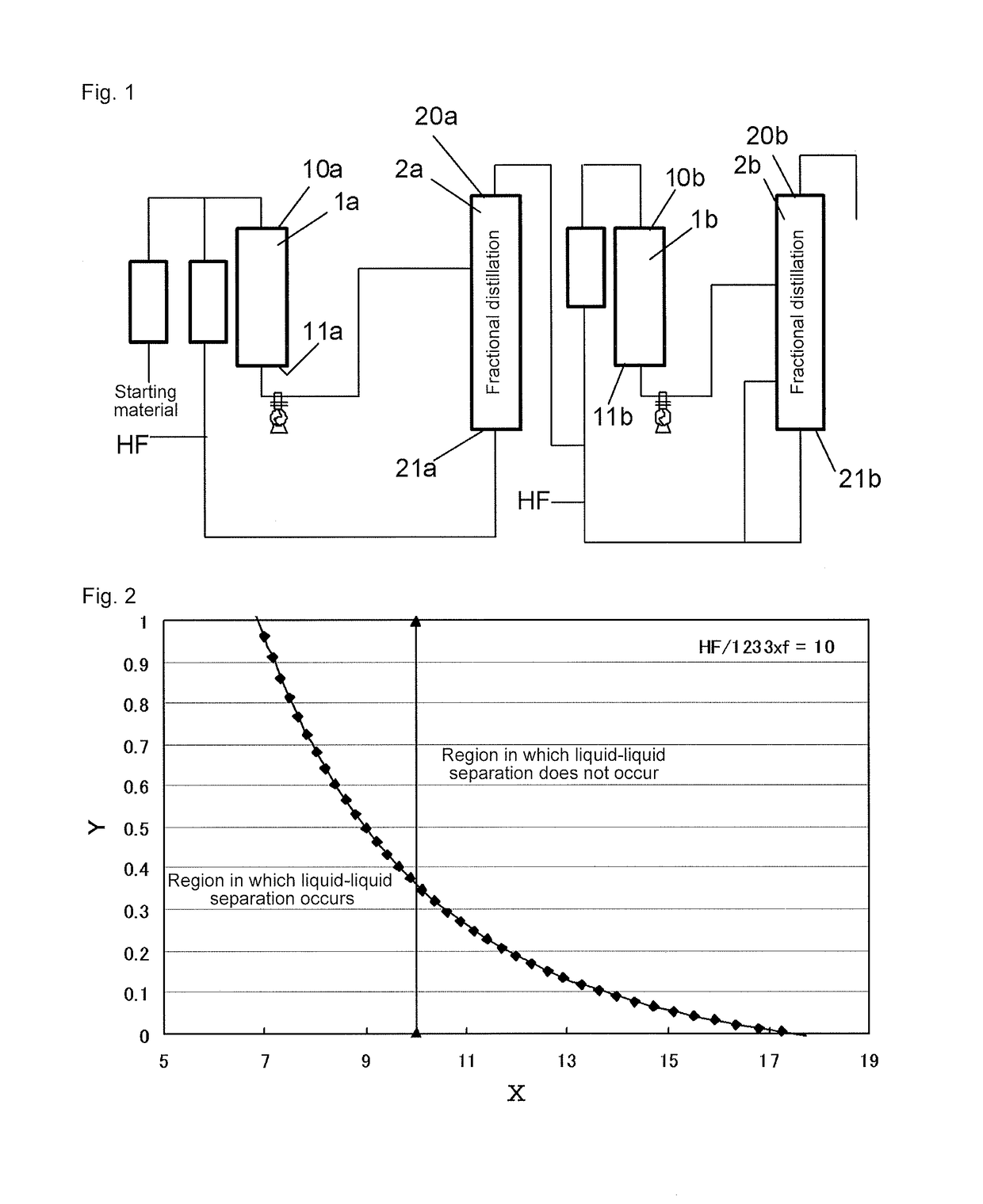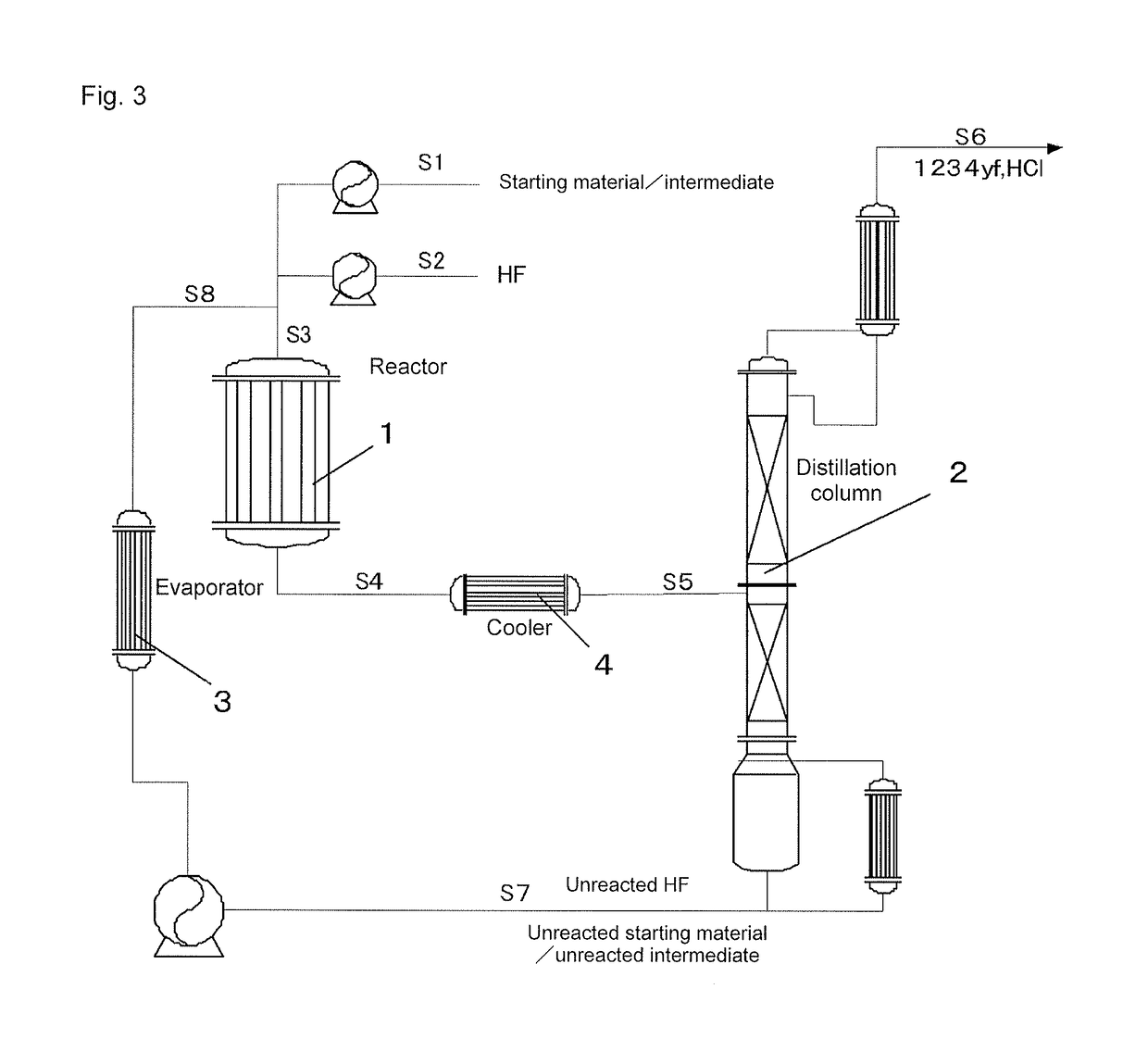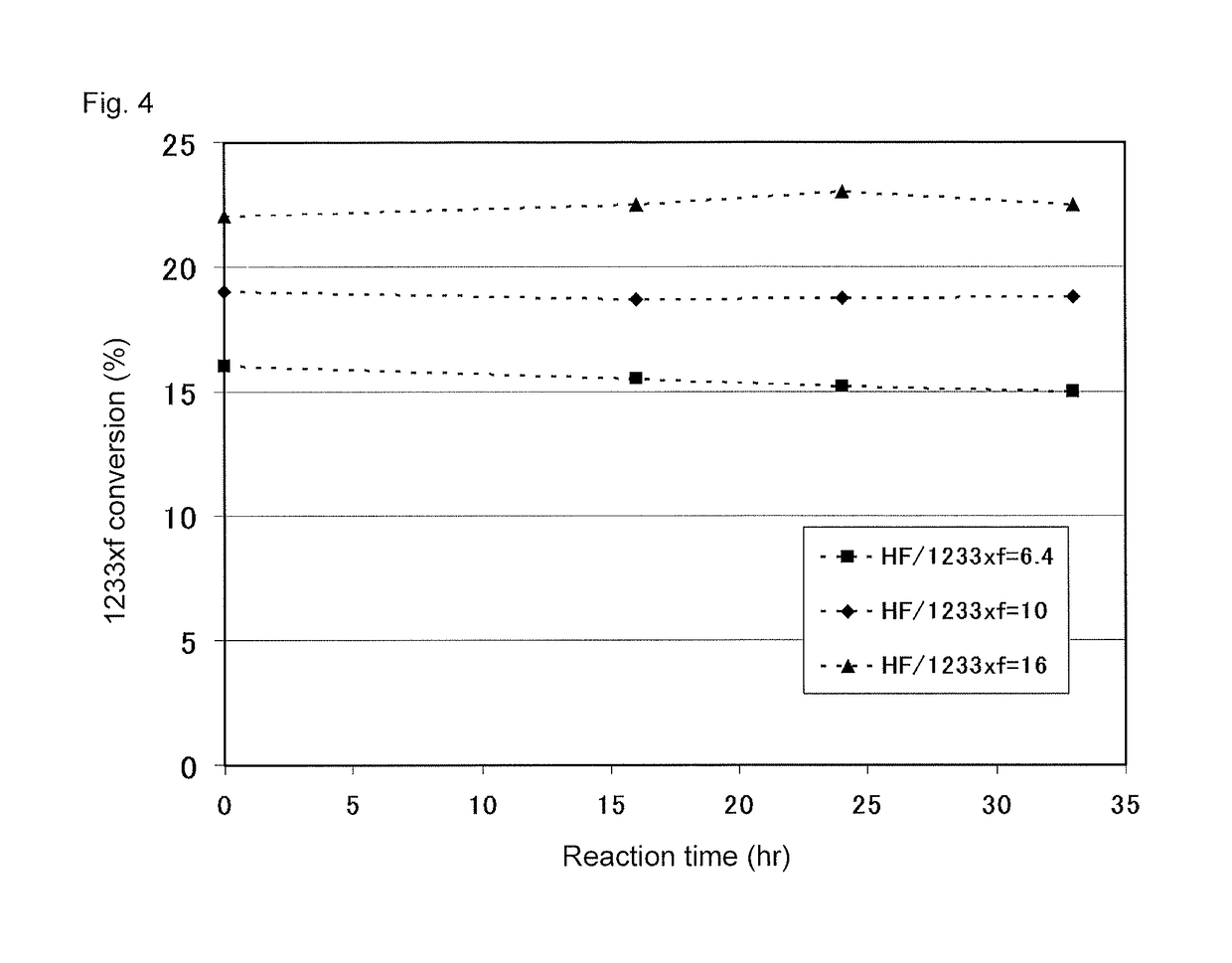Method for producing chloropropene and method for producing 2,3,3,3-tetrafluoropropene
a technology of chloropropene and chloropropene, which is applied in the field of chloropropene and the method of producing 2,3,3,3tetrafluoropropene, can solve the problems of inability to complete the recovery of refrigerants, the diffusion of these refrigerants due to leakage, and the increase of global warming of refrigerants, etc., to achieve the effect of suppressing catalyst deactivation in the reaction system, stably producing, and suppressing
- Summary
- Abstract
- Description
- Claims
- Application Information
AI Technical Summary
Benefits of technology
Problems solved by technology
Method used
Image
Examples
example 1
[0128]According to the production flow shown in FIG. 1, HFO-1234yf was produced. Cylinder-shaped reactors made of Hastelloy C22 were used. Cylinder-shaped packed columns made of Hastelloy C22 were used as distillation columns. The packing used was CMRNo2.5, the column diameter was 500 A, and the packed length was 10000 mm×2.
[0129]240db (1,1,1,2,3-pentachloropropane) was used as a starting material in step (a) of the first stage. A mixed gas of 240db and hydrogen fluoride was continuously supplied to a first reactor 1a at a flow rate of 7,000 m3 / hr (in terms of standard conditions for gas). The internal temperature of the first reactor 1a was 300° C., and the pressure was 0.75 MPa (gauge pressure). Further, in the reaction, the molar ratio of hydrogen fluoride to 240db was 20. To the first reactor 1a, 24.8 t of a Cr oxide catalyst (Cr2O3) was supplied as a catalyst in advance.
[0130]After the reaction, the reaction products were withdrawn from the first reactor 1a, fed to a first dist...
example 2
[0136]According to the production flow shown in FIG. 3, 1233xf was produced from 240db. First, 240db was fed through the S1 line, hydrogen fluoride was fed through the S2 line, and these two came together in the S3 line. The mixed gas of 240db and hydrogen fluoride was continuously supplied to a reactor 1 at a flow rate of 7,000 m3 / hr (in terms of standard conditions for gas). The internal temperature of the reactor 1 was 300° C., and the pressure was 0.75 MPa (gauge pressure). Further, in this reaction, the molar ratio of hydrogen fluoride to 240db was 20. To the reactor 1, 24.8 t of a Cr oxide catalyst (Cr2O3) was supplied as a catalyst in advance. After the reaction, the reaction mixture was withdrawn from the reactor 1, fed to a distillation column 2, and subjected to distillation. The same reactor, distillation column, evaporator, and cooler as used in Example 1 were used for the reactor 1, distillation column 2, evaporator 3, and cooler 4.
[0137]The distillation in the distilla...
example 3
[0140]According to the production flow shown in FIG. 3, 1233xf was produced from 1230xa (1,1,2,3-tetrachloropropene). First, 1230xa was fed through the S1 line, hydrogen fluoride was fed through the S2 line, and these two came together in the S3 line. The mixed gas of 1230xa and hydrogen fluoride was continuously supplied to a reactor 1 at a flow rate of 7,000 m3 / hr (in terms of standard conditions for gas). The internal temperature of the reactor 1 was 300° C., and the pressure was 0.75 MPa. Further, in this reaction, the molar ratio of hydrogen fluoride to 1230xa was 20. To the reactor 1, 24.8 t of a Cr oxide catalyst (Cr2O3) was supplied as a catalyst in advance. After the reaction, the reaction mixture was withdrawn from the reactor 1, fed to a distillation column 2, and subjected to distillation. The unreacted 1230xa and the unreacted hydrogen fluoride were withdrawn from the still of the distillation column 2 and fed to the reactor 1 again to be reused as raw materials for the...
PUM
| Property | Measurement | Unit |
|---|---|---|
| pressure | aaaaa | aaaaa |
| pressure | aaaaa | aaaaa |
| molar ratio | aaaaa | aaaaa |
Abstract
Description
Claims
Application Information
 Login to View More
Login to View More - R&D
- Intellectual Property
- Life Sciences
- Materials
- Tech Scout
- Unparalleled Data Quality
- Higher Quality Content
- 60% Fewer Hallucinations
Browse by: Latest US Patents, China's latest patents, Technical Efficacy Thesaurus, Application Domain, Technology Topic, Popular Technical Reports.
© 2025 PatSnap. All rights reserved.Legal|Privacy policy|Modern Slavery Act Transparency Statement|Sitemap|About US| Contact US: help@patsnap.com



